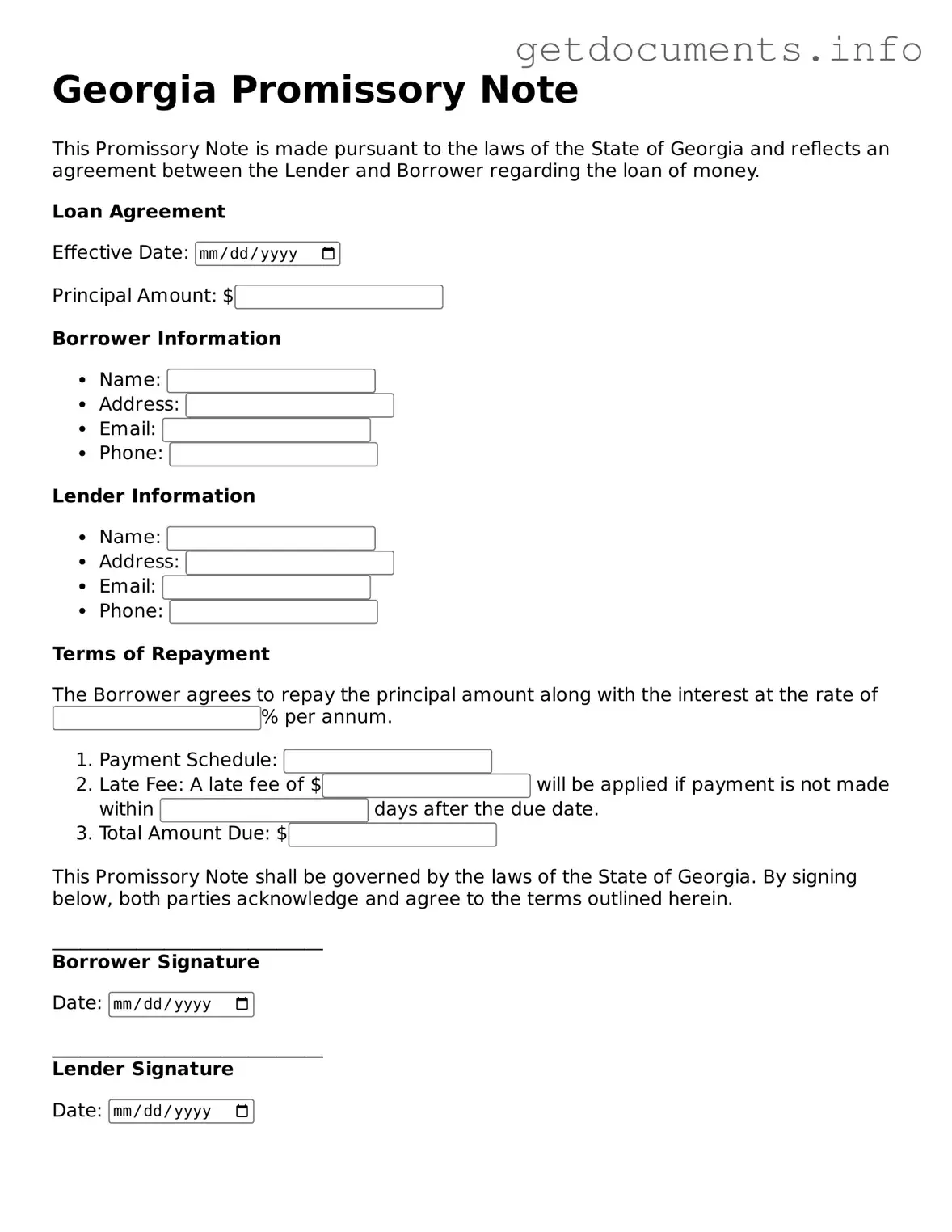Free Promissory Note Template for Georgia
A Georgia Promissory Note is a written promise to pay a specific amount of money to a designated person or entity at a specified time or on demand. This document outlines the terms of the loan, including interest rates and payment schedules. Understanding this form is crucial for both lenders and borrowers to ensure clarity and legal protection in financial transactions.
Ready to create your own Georgia Promissory Note? Fill out the form by clicking the button below.
Access Promissory Note Editor
